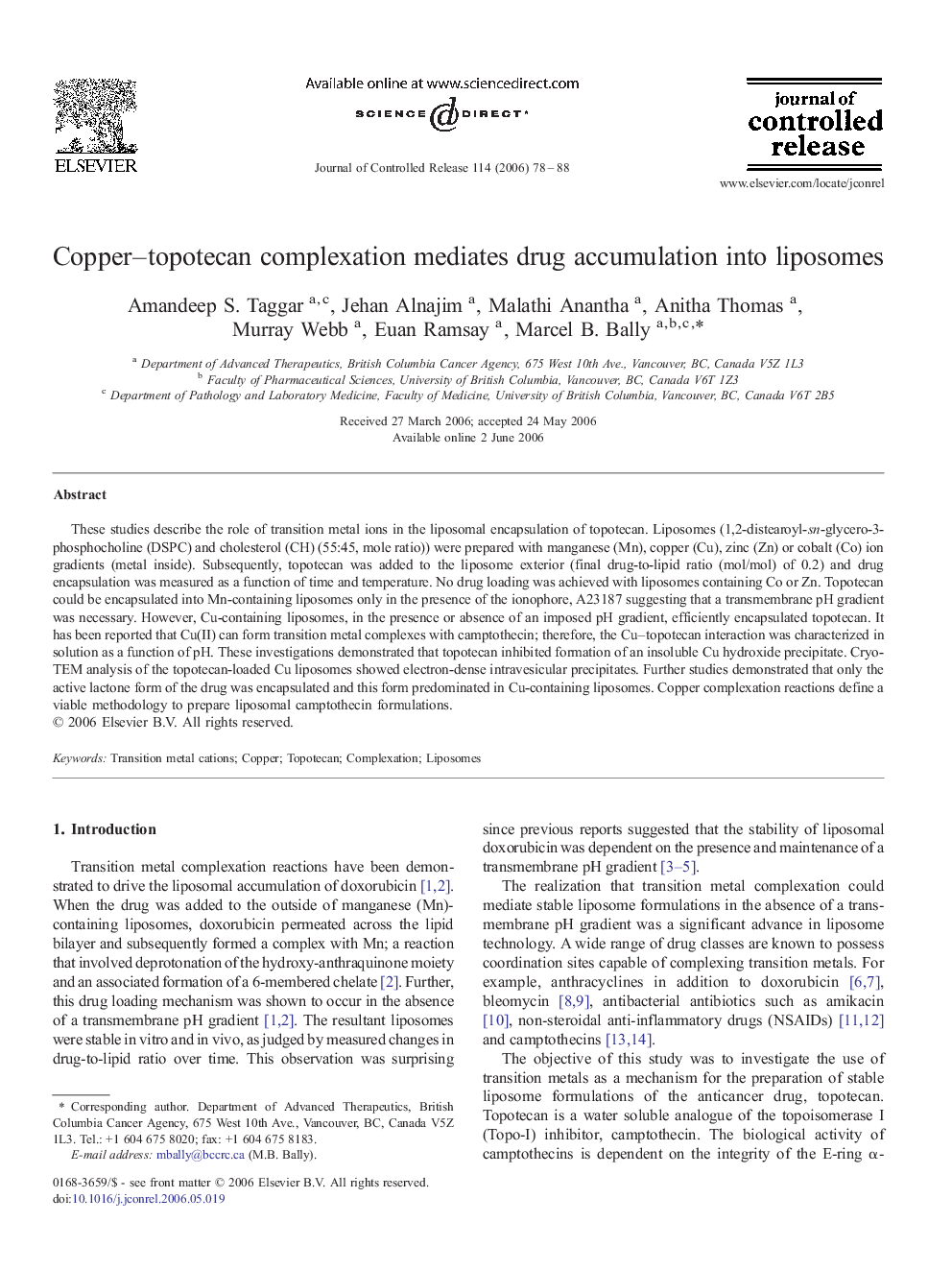| Article ID | Journal | Published Year | Pages | File Type |
|---|---|---|---|---|
| 1427388 | Journal of Controlled Release | 2006 | 11 Pages |
These studies describe the role of transition metal ions in the liposomal encapsulation of topotecan. Liposomes (1,2-distearoyl-sn-glycero-3-phosphocholine (DSPC) and cholesterol (CH) (55:45, mole ratio)) were prepared with manganese (Mn), copper (Cu), zinc (Zn) or cobalt (Co) ion gradients (metal inside). Subsequently, topotecan was added to the liposome exterior (final drug-to-lipid ratio (mol/mol) of 0.2) and drug encapsulation was measured as a function of time and temperature. No drug loading was achieved with liposomes containing Co or Zn. Topotecan could be encapsulated into Mn-containing liposomes only in the presence of the ionophore, A23187 suggesting that a transmembrane pH gradient was necessary. However, Cu-containing liposomes, in the presence or absence of an imposed pH gradient, efficiently encapsulated topotecan. It has been reported that Cu(II) can form transition metal complexes with camptothecin; therefore, the Cu–topotecan interaction was characterized in solution as a function of pH. These investigations demonstrated that topotecan inhibited formation of an insoluble Cu hydroxide precipitate. Cryo-TEM analysis of the topotecan-loaded Cu liposomes showed electron-dense intravesicular precipitates. Further studies demonstrated that only the active lactone form of the drug was encapsulated and this form predominated in Cu-containing liposomes. Copper complexation reactions define a viable methodology to prepare liposomal camptothecin formulations.
